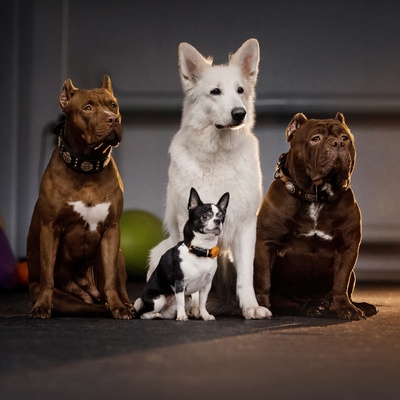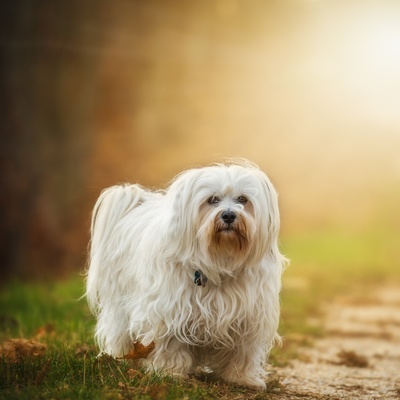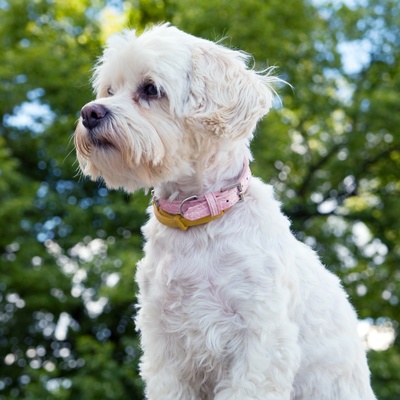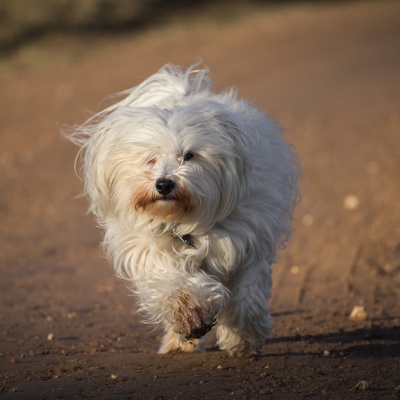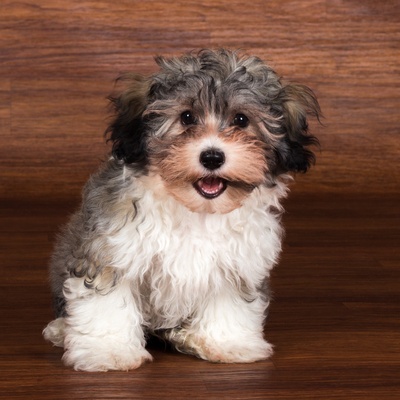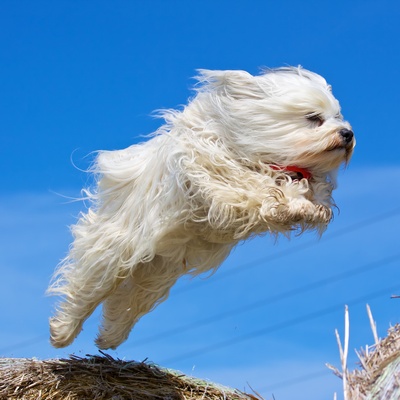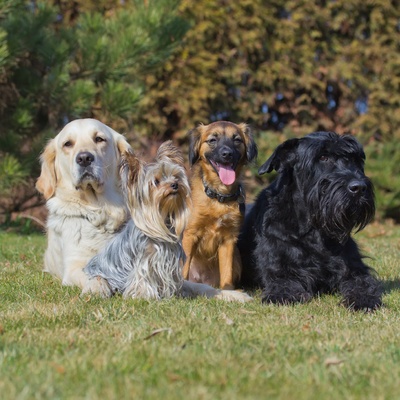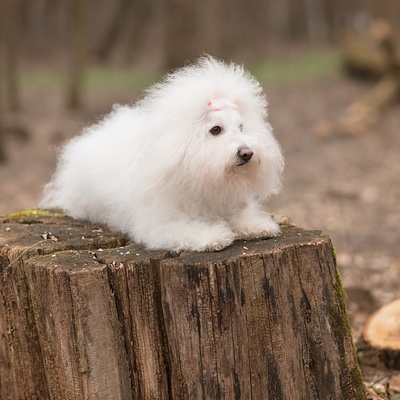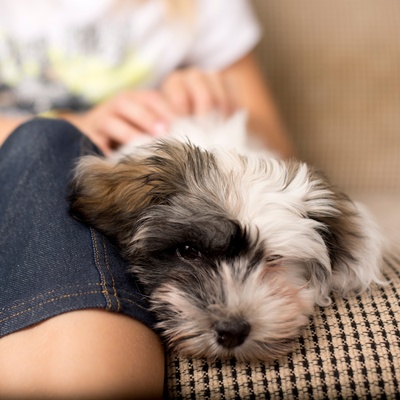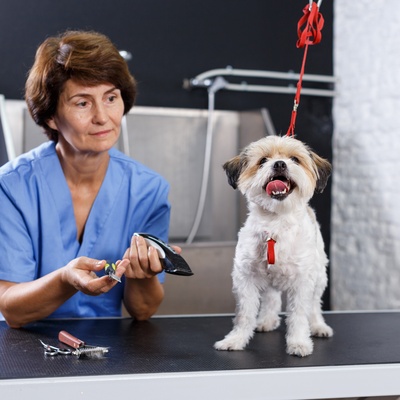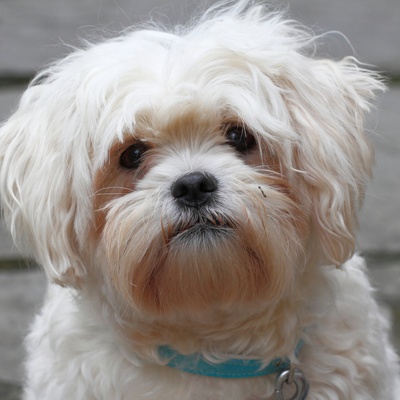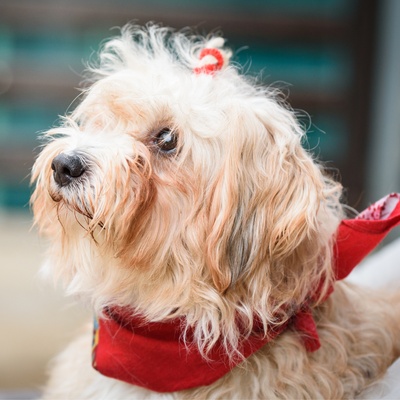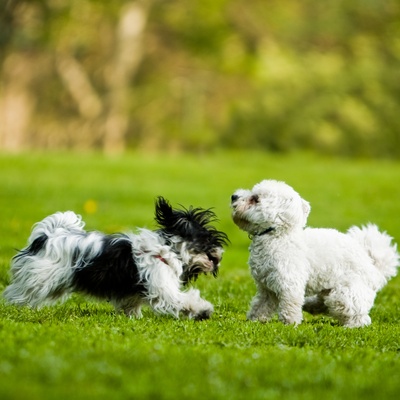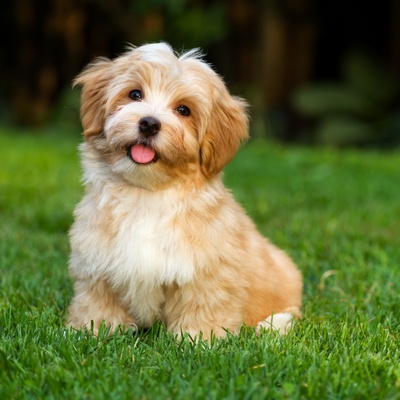Introducing the Havanese Dog
Discover all there is to know about the Havanese Dog: its characteristics, behavior, training, and its cost.

Discover all there is to know about the Havanese Dog: its characteristics, behavior, training, and its cost.
The origin of the Havanese dog traces back to Cuba, where it descended from the Bichon family and was bred as a companion for the Cuban aristocracy. Today, the Havanese dog is among the most loved and popular toy breeds worldwide. They are known for their charming and playful demeanor, coupled with an affectionate nature that makes them perfect family pets.
Their versatility and intelligence make them suitable for numerous activities, from providing comfort as therapy dogs to participating in competitive dog sports. They form strong bonds with their owners and are known for their "Velcro dog" tendency, often sticking close to their human companions.
This section outlines the unique features of the Havanese dog breed.
The Havanese dog belongs to the toy group (9), which includes small, companionable dogs. These breeds are typically affectionate, playful, and ideal for indoor living.
The Havanese dog is a small breed. They generally stand about 8.5 to 11.5 inches tall at the withers and weigh between 7 to 13 pounds.
Havanese dogs have long, silky hair. Their fur is soft and flowing, requiring regular grooming to maintain its texture and prevent tangling.
Havanese dogs exhibit a wide range of coat colors. While their coats can vary, the most common colors include white, black, and various shades of brown, often in combinations and patterns.
Havanese dogs adapt well to various living environments, including apartments and houses. They thrive best in homes where they can receive ample attention and exercise.
Havanese dogs are known for their friendly and sociable nature. They are excellent with children and can get along well with other pets, making them great family companions.
Havanese dogs are generally healthy but can be predisposed to certain conditions like allergies and joint problems. Regular veterinary care is essential to maintain their well-being.
Havanese dogs are intelligent and eager to please, making them relatively easy to train. Using kindness and patience is crucial to achieving the best results during training sessions.
We can help!
Every dog has its own character, and so do you. Making the right choice will ensure his well-being and yours.
Take our quiz to find out which breed is right for you, based on your personality, lifestyle, location and many other criteria.
Don't wait any longer and take the quiz to find out the answer!
The Havanese dog is a small, well-balanced, and elegant breed. With a silky coat that often features a blend of colors, such as white, black, and various shades of brown, their appearance is truly charming.
The Havanese dog is a small breed. Females typically measure between 8.5 to 10.5 inches, while males can reach up to 11.5 inches at the withers. In terms of weight, female Havanese dogs usually weigh between 7 to 10 pounds, while males can weigh up to 13 pounds.
Havanese puppies grow at a moderate pace. They reach about half of their adult weight by four to six months. By their first birthday, most Havanese dogs have reached their full adult size and weight, though some may continue to fill out slightly until they are 18 months old.
The Havanese dog has a long, silky coat that often features gentle waves. Their fur is soft to the touch and has a luxurious texture, with fringes that add to their elegant appearance.
The coat color of the Havanese dog comes in a wide palette. Common colors include white, black, fawn, chocolate, and combinations of these shades. The variety in coat colors adds to the breed's charm and appeal.
The Havanese dog has a long, flowing coat with a thick undercoat that requires regular maintenance. They shed minimally throughout the year, making them a good choice for people with allergies. However, to prevent tangling and matting, it's essential to brush their coat several times a week.
Regular grooming sessions are necessary to keep the Havanese coat in top condition. This includes trimming around the eyes and ears to ensure they stay clean and free from debris. Bathing should be done every few months or as needed, using mild dog shampoo to maintain their coat's silky texture and prevent skin irritation.
The Havanese dog is a balanced, well-proportioned breed known for its charming appearance. The head is slightly rounded with a moderate stop, and the muzzle is of medium length, contributing to the breed's harmonious look. Their eyes are large, almond-shaped, and dark brown, exuding a gentle and expressive quality. The ears are set high on the head, dropping down and covered with long, silky hair, adding to their endearing expression.
The body of the Havanese is sturdy yet elegant, with a straight topline and a slightly arched neck. They possess a compact and muscular build, giving them a lively and agile demeanor. The tail is set high and carried over the back in a plume, adding to their graceful and spirited appearance.
The Havanese dog is known for its loyalty, affectionate nature, and playful behavior, making them delightful and loving companions.
There are currently no fewer than 400 breeds of dog, divided into 10 groups. Each group is made up of breeds with shared features. The Havanese dog belongs to the toy group, which includes small breeds primarily bred for companionship. This group features breeds like the Pomeranian, Shih Tzu, and Maltese. Dogs in this group are typically affectionate, friendly, and excellent companions.
Havanese dogs are known for their remarkable intelligence, playful nature, and gentle disposition. They excel as companion animals, bringing joy and comfort to their families with their endearing personalities. The primary role of the Havanese is to provide companionship, making them ideal pets for a variety of households.
The Havanese dog is known for its lively and friendly temperament. These affectionate dogs thrive on human interaction and love to be the center of attention. They form strong bonds with their owners, displaying their affection through constant companionship and playful antics.
A present and attentive owner is crucial for the Havanese, as they require regular interaction and stimulation to develop properly.
Havanese dogs are incredibly sociable and generous in their affection. They get along well with humans, including strangers, making them excellent pets for families and individuals alike. Their gentle and patient nature makes them particularly good companions for children.
It is essential to work on their social skills from a young age to ensure they grow into well-rounded and confident dogs. This early socialization helps them maintain their friendly disposition and adaptability in various social situations.
Take the test and find out the dog breed that matches your personality and lifestyle.
The Havanese dog is highly adaptable and can thrive in various living situations, whether it be an apartment, a house, or an urban or rural environment. The key to their happiness is the love and attention they receive from their owners. Havanese dogs need regular interaction and should not be left alone for long periods. They require at least two walks a day, each lasting around 20 to 30 minutes, to stay healthy and happy.
While the Havanese is adaptable, they benefit greatly from having access to an outdoor environment where they can satisfy their curiosity and expend energy. An outdoor space allows them to run, play, and explore, which is crucial for their physical and mental well-being. Even in smaller living spaces, regular outdoor activities are essential to keep these lively dogs content and stimulated.
The Havanese dog is known for its superior intelligence and eagerness to learn, making them relatively easy to train. Their training should focus on positive reinforcement techniques, including praise, treats, and play. Havanese dogs thrive in environments where they receive consistent training and mental stimulation.
Due to their curious nature, equipping your Havanese with a GPS collar, such as those offered by Weenect, can help prevent losses or escapes during outdoor activities.
Havanese dogs have excellent listening qualities and are quick to pick up on commands. They respond well to gentle, consistent training methods and enjoy tasks that challenge their intellect.
Socialization is crucial from a young age to ensure they develop good manners and confidence around other dogs and people. Given their small size and agility, they excel in obedience and agility training, making them versatile companions in various activities.
The Havanese dog is generally a healthy breed, known for its resilience and vitality. However, daily care is essential to maintain their health and prevent diseases and infections. Regular grooming, a balanced diet, and prompt veterinary attention are crucial components of their care routine.
The Havanese dog is typically robust and enjoys good overall health. However, like all breeds, they have specific health predispositions. Common health issues in Havanese dogs include patellar luxation, hip dysplasia, and eye disorders such as cataracts. Symptoms of these conditions can include lameness, difficulty moving, or vision problems.
Regular veterinary check-ups are essential to monitor and manage these health concerns effectively. The typical lifespan of a Havanese dog ranges from 14 to 16 years.
Routine veterinary care is vital for maintaining the health of your Havanese dog. This includes vaccinations, deworming, and parasite treatments as recommended by your vet. Daily care should involve brushing the coat to prevent matting and tangling, cleaning the ears to avoid infections, and brushing the teeth to prevent tartar buildup and bad breath. Regular nail trimming is also important to avoid discomfort or injury.
Being aware of potential allergies and consulting your vet for appropriate recommendations is crucial. The Havanese dog is not considered hypoallergenic, so potential owners with allergies should take this into consideration. Maintaining a consistent care routine ensures that your Havanese dog stays healthy, happy, and well-groomed throughout their life.
Like all dog breeds, the Havanese dog has specific nutritional needs that must be met to maintain its vitality and strength. A balanced diet rich in proteins and vitamins is essential for their overall health. High-quality kibble specifically formulated for small breeds is an excellent choice as it provides a balanced dietary foundation tailored to their needs.
In addition to kibble, you can supplement your Havanese's diet with lean white and red meat, such as chicken or beef, to meet any additional protein requirements. However, it is crucial to limit the amount of fat in their diet to prevent obesity and other related health issues. Ensuring your Havanese receives a balanced and nutritious diet will help keep them healthy and energetic.
The Havanese dog is a well-regarded breed known for its charming personality and adaptability. There are several breeders available for this breed, making it relatively accessible. It's important to consider several factors before adopting.
Before adopting a Havanese dog, it is essential to consider several factors to make an informed decision. First and foremost, selecting a reputable breeder is crucial. Visiting the breeder's premises allows you to assess the living conditions and behavior of the dogs. Ensuring the health of the puppy and its parents is vital; reputable breeders should provide transparent information about the current health status of the puppy and any illnesses in its lineage.
Lastly, you must have your dog microchipped by the age of 8 weeks old and have their details registered on a relevant database like Petlog or Animal Tracker. This is a legal requirement in Great Britain, and non-compliance could result in a
fine. For microchipping, consult your veterinarian. Alternatively, any Blue Cross center will offer this service free of charge.
The acquisition cost of a Havanese dog can vary based on several factors, such as lineage, pedigree, the reputation of the breeder, and the age of the dog. Typically, a Havanese puppy costs between
and
from a breeder.
In addition to the purchase price, it is important to consider the ongoing costs of maintaining a Havanese dog. These costs include veterinary fees, food, grooming, and other essentials, which can amount to approximately
to
annually. Ensuring you are prepared for these expenses is crucial to providing a happy and healthy life for your new companion.
Choosing a dog that matches your personality and lifestyle will ensure your well-being and his!
To access the most relevant information, suitable payment methods, and delivery in your region, please select the website corresponding to your country.

